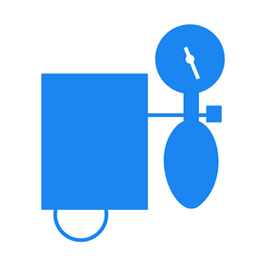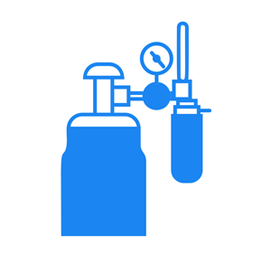
Medical devices are the most critical aspect of the healthcare industry, helping to diagnose, prevent, treat, and monitor various medical conditions. However, the impact of technology and healthcare concerns compel us to ensure the safety, effectiveness, and quality of medical devices before launching them to the Indian market. Medical device regulatory services oversee every process from top to bottom that includes the development, manufacturing, distribution, and marketing of these devices.
As a medical device regulatory consultant, we ensure the devices comply with the regulations and standards set by the Indian regulatory authority: Central Drugs Standard Control Organization (CDSCO) under the Ministry of Health and Family Welfare. We help our clients to know everything about the import of medical devices in India.
If one needs to introduce a medical device in the Indian market, they have to interpret the complex regulatory framework, encompassing pre-market approval, post-market surveillance, event reporting, and quality management.
By approaching an expert in Indian regulatory affairs, it becomes easy for medical device Importer and manufacturers to navigate the regulatory landscape, expedite the approval process, and acknowledge patient safety, and efficacy of devices.
Dynamics of the Medical Devices in the Indian Market

According to the 2022-2027 report, the digital healthcare market is expected to grow at a CAGR of 28.50% and reach INR 2,528.69 Bn by 2027.

India is the 4th largest market for medical devices in Asia and the market size is expected to reach INR 4,358.64 Bn by FY 2027 at a CAGR of 41.93%.

Under the Production Linked Incentive (PLI) Scheme, the Indian government enables growth and innovation in the MedTech industry.
Can't be able to interpret the Indian regulatory framework for medical devices?
Understanding Medical Device Regulation Framework in India
CDSCO is the predominant regulatory authority in India, responsible for adjudicating medical devices and ensuring their safety and performance. In India, Medical devices are regulated as per Medical Device Rules 2017.
For more precise insights on medical device regulatory services, you should learn about the technicality of medical device import license in India. Before diving deep into regulatory services of medical devices, understand its vital aspects:

Classification
Based on the risk involved to patients and users, medical devices are classified into four categories. It determines its level of regulatory control and requirements.

Quality Management System (QMS):
Based on international standards such as ISO 13485, manufacturers as well as importers of all classes of Medical Devices need to have QMS. It ensures the safety and quality of these devices.

Import and Export
Companies must obtain a medical device Import License in India from the CDSCO for importing the devices. Similarly, they require compliance with relevant regulations and seek permission for exporting the devices.

Clinical Investigations
If any Medical Devices which does not have predicate devices in India and/ or are not approved anywhere in the world and where high-risk is involved with medical devices, it is essential to conduct clinical trials or clinical investigations for ensuring Safety, Performance and effectiveness under CDSCO guidelines and requirements.

Labeling and Packaging
Another important aspect of medical device regulations is labeling and packaging. Under Medical Devices Rules 2017, proper labeling is required to provide essential information about devices to their end users.

Post-Market Surveillance
Things will not end by bringing a medical device into the market; it also needs proper monitoring of its Safety and Performance. And, everything, from complaints to adverse events, is reported to the CDSCO.
CDSCO Medical Device Classification
Based on risk level, medical devices are classified into four categories: Class A, B, C, and D.
Under the Medical Devices Rules 2017, classification of medical devices is based on the intended use and the potential harm they can cause
Class A (Low Risk):
It covers stethoscopes, bandages, and other basic medical instruments, causing no potential harm to humans.
Class B (Low-to-Moderate Risk):
It covers blood pressure monitors, needles, and syringes that may cause harm to patients if not used properly.
Class C (Moderate-to-High Risk)
It includes artificial heart valves, catheters, and orthopedic implants, having the potential to cause injury if malfunctioning.
Class D (High Risk):
It covers pacemakers, ventilators, and heart-lung machines. They are critical to the health and survival of patients and could lead to death if malfunction.

CDSCO Medical Devices Regulatory Body in India
In India, the medical device industry is expanding at a fast pace. Interestingly, the market size of medical devices is approx. $11 Bn in 2020 and is expected to grow to $50 Bn in the next five years. Implementation of the PLI scheme is a welcome move by our government. Under the PLI scheme, a total of 26 projects have been approved, reflecting the investment of Rs.1206 Cr.
To facilitate the growth of the medical device sector, the National Medical Devices Policy, 2023 is introduced and expected to meet the public health objectives of access, affordability, quality, and innovation. Since 2006, Medical devices are regulated by the Central Drugs Standard Control Organization (CDSCO): an agency of the Ministry of Health and Family Welfare.
The Medical Device Rules 2017 is considered the regulatory framework for medical devices. Under CDSCO, the Drug Controller General of India (DCGI) regulates medical devices and IVDs in India.
When it comes to licensing medical devices, the Central Licensing Authority (CLA) manages the import of all Classes of medical devices, manufacturing of Class C and Class D medical devices, clinical investigation, and clinical performance evaluation and approval of new in vitro diagnostic medical devices.
The State Drugs Controller or State Licensing Authority oversees the manufacture for sale or distribution of Class A or Class B medical devices and the sale, stock, exhibit, or offer for sale or distribution of medical devices of all classes.
Licensing and Registration Requirements for Medical Devices
India’s medical device market is one of the top 20 medical device markets in the world. India imports approx. 70% of its medical devices. Being a prominent regulatory service provider, we understand different aspects of FDA medical device registration. That’s why the knowledge of Medical Devices Rules 2017 is essential to know device-related regulations for managing devices classification, registration, manufacturing and import, labeling, sales, and post-market requirements.
Medical Device License For Import
A three-step process to access the Medical Device Import License in India, including:
Indian medical device regulations do not allow foreign manufacturers to apply for a license directly to CDSCO. So, they need to appoint an Indian Authorized agent for filing of their application of medical device registration.
An authorized agent must possess a valid wholesale license to execute the import of medical devices smartly. Without headaches and consuming much time, we allow foreign manufacturers to get their licenses precisely.
Importer Registration (Form MD-14, Form MD-15)
Importers are required to register themselves with CDSCO by submitting the Form MD-14. Along with the form, they also need to submit the required documents and fees.
For moving ahead with the process of importer registration, we will guide you and help to ease the process for your business growth.
Test license to import Medical Devices (Form MD-16, Form MD-17)
By filling out Form MD-16, an importer is allowed to import medical devices in small quantities for testing, demonstration, clinical investigations, or training. The companies will get test license to import medical devices, if they complete their applications properly.
Our team of experts will help to clear every roadblock and complete the Medical Device Registration process successfully. With proper documentation and registration, you will definitely get your test license for importing medical devices.
Still, getting a medical device import license is a big challenge for you?
Medical Device License For Manufacturer
As per the new rule of Medical Devices 2020, new amendments are made by the Indian government. To get a CDSCO medical device manufacturing license, one has to understand the medical device classification.
For Class A & B (Form MD-3, Form MD-5)
If you are seeking a manufacturing License for the sale and distribution of Class A and Class B medical devices, you have to connect with the State Licensing Authority. An applicant submits the Form MD-3 along with essential documents. Further, you will receive the license in Form MD-5.
For Class C & D (Form MD-7, Form MD-9)
Following every step correctly will smoothen the process of medical device registration in India. When you wish to obtain a manufacturing License for Class C & Class D Medical Devices, you have to approach Central Licensing Authority (CLA). Submit your application in Form MD-7 and will get a manufacturing license in Form MD-9.
Voluntary Registration of Medical Devices
Committed to our work, we make the process of getting voluntary registration of medical devices trouble-free. Through an online portal, companies can register their medical devices with Central Licensing Authority and forward their application for the registration process. From the date of the notice, voluntary registration of medical devices will last as per the timelines of Licensing Authority.
Further, manufacturers or importers must upload all necessary documents on the digital platform as per Rules 19B and 19D of Chapter IIIA of the Medical Devices (Amendment) Rules, 2020. Through our platform, we make sure that you will follow the right process to successfully complete the FDA medical device registration.
Permission to Manufacture or Permission for loan license to manufacture Class A & B Medical Devices in India
Manufacturers of Medical Devices need to register under the Medical Device Rules 2017. Manufacturing Class A & B Medical devices, which involve low or moderate risk falls under the management of State Licensing Authorities.
As an experienced Medical Device regulatory consultant, we help manufacturers in filling their forms and complete their applications with respective state FDA authorities.
Permission to Manufacture or Permission for loan license to manufacture Class C & D Medical Devices in India
When you are seeking permission to manufacture moderate to high-risk medical devices belonging to Class C & D, you have to comply with the authority of Central Licensing Authorities (CLA).
Dueran Consultant, we are offering remarkable Medical Device Regulatory Services to help our clients in getting their licenses with no headache.
Permission For Test License to manufacture Medical Device
Sometimes, manufacturers are required to obtain a test license for manufacturing medical devices in small quantities to serve the purpose of Testing, Training, Demonstration, or Clinical investigation. To make the process workable, they need to submit Form MD-12 to Licensing Authority.
Connect with our expert team who works dedicatedly and complete the process for obtaining a test license in Form MD-13 in less time.
Personal Use License: (Form MD-20 and Form MD-21)
Under Chapter V of the Medical Device Rules 2017, you will find the rules and regulations for importing Medical devices into India. It also allows you to import medical devices for personal use in a small quantity and for that, you need to fill out the application in Form MD-20. Further, you will receive permission for import for Personal Use from Central Licensing Authority in Form MD-21. Through our platform, you will get proper assistance to get Personal use license.
Application for Clinical Investigation: (Form MD-22 and Form MD-23)
When manufacturers and importers need to conduct a clinical investigation of investigational medical devices, they have to obtain permission from Central Licensing Authority. It can be done by submitting an online application in Form MD-22. Complete the form with the correct details or you can ask our experts for further information to submit your application without any hurdle.
Permission to manufacture/ Import Medical Device without predicate (Form MD-26 and approval in Form MD-27)
Are you looking for getting an Manufacture/ import license for a new medical device? Then, you need to connect with our experienced professionals and gain knowledge of Form MD-26 and Form MD-27. Through Form MD-26, you can apply for approval of Medical Devices, which do not have a predicate medical device in India and seek permission to import or manufacture the same through Form MD-27.
Free Sale Certificate
Are you willing to export medical devices from India? We are here to help you to get a Free Sale Certificate from the Licensing Authority. Our experts streamline the application process for getting the certificate on time.
Market Standing Certificate:
Marketing Standing Certificate is essential certificate for companies participating in various tenders in India. If it gets complicated for you to get the Market Standing Certificate, you can connect with us and seek our professional guidance to understand the process completely.
Non-Conviction Certificate:
With more than a decade of experience, we provide the required assistance to our clients to obtain Non-conviction certificate of Notified Medical Devices. We make your application submission to CDSCO successful.
Neutral Code Certificate:
If Foreign Buyers are not interested to reflect the name and address of manufacturing company on product labels, you can seek a Special code certificate or Neutral code certificate. Submit your application to CDSCO and get permission for export of Medical Devices.
Registration of Class A Medical Devices which are Non- Sterile, and Non-measuring Devices
If you wish to manufacture or import Class A, non-sterile and non-measuring devices, you must register your notified medical devices with the CDSCO. Make sure to visit the online portal of the Ministry of Health and Family Welfare and get your registration number. If you need assistance to streamline your application process with CDSCO, we are here to help.
Miscellaneous Services:
Any Post Approval Changes, Shelf Life Extension of Medical Devices or any other services related to Medical Devices approval from CDSCO.
At Dueran Consultant, you will find other regulatory services for importing or manufacturing medical devices. We can provide other miscellaneous services such as shelf life extension or the need to understand post-approval changes. The dedication and expertise of our professionals will make the process of getting medical device approval from CDSCO hassle-free.
